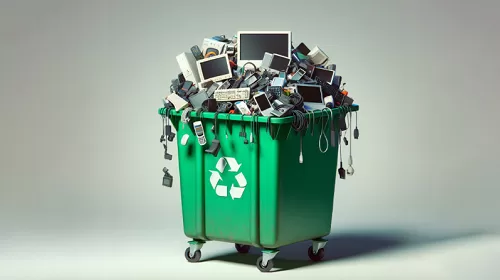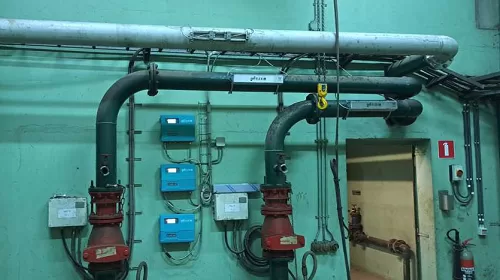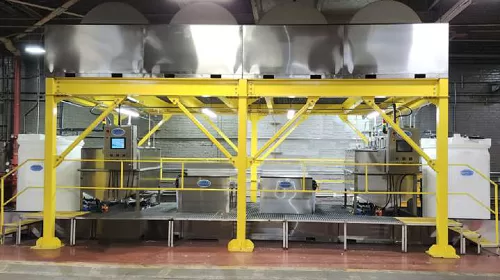E-Waste, as a generic term, describes all types of old, end-of-life or discarded electrical and electronic equipments including all components, sub-assemblies and consumables, which are part of the product at the time of discarding.
This form of waste encompasses
- Small IT equipments like cell phones, laptops, tablets, routers;
- Consumer electronics like televisions, audio sets, video recorders;
- Household appliances like coffee machines, refrigerators, washing machines, air conditioners, LED lamps, vacuum cleaners, toys, microwave ovens; and
- Medical devices and equipments which are damaged or obsolete.
All the listed items and many others add ease, comfort, and luxury to the modern life and have therefore become an indispensable part of modern societies. However, short lifespan, limited repair options and fast-changing technology is turning a high proportion of electronic gadgets into waste upon the end of its usable life due to damage, non-working, operational risks, or availability of better alternatives.
The causes for generation of E-waste can broadly be categorised as under:
- Population: With a rising global population, the number of electronic device users is expanding.
- Consumerism: The rise in disposable income of the families and demand for the latest technology contribute to higher consumption of electronic gadgets and their disposal rates.
- Technology: Rapid innovation leads to frequent product upgrades, resulting in shorter product lifecycles.
- Obsolescence: Manufacturers often design products with limited lifespans to drive repeat purchases, contributing to e-waste.
GENERATION
E-waste is generated by residential buildings, commercial businesses, industries and institutes like schools, hospitals etc. The rate of generation of ewaste at the global level has increased substantively in recent years. While the annual growth rate of ewaste generation was 3 – 4 % upto year 2018, it has gone high to around 6% after year 2019. In year 2020, the global per capita generation was 7.3 kg per person. This rate amounted to approx 55.5 million metric tons of e-waste worldwide, which was higher by 20% than that of year 2015. In 2022, an estimated 60 million tonnes of e-waste were produced globally. By year 2030, global e-waste is expected to reach upto around 75 million tonnes annually.
Region wise distribution of year 2019 show highest generation in Asia (24.9 million MT ~47% of global e-waste), which was followed by Americas (13.1 million MT ~24%), then Europe (12 million MT ~22%), Africa:(2.9 million MT ~5%) and Oceania: (0.7 million MT ~1%). The per capita generation has been highest (16+ kg per person) in Europe and Oceania.
EXPOSURE & HAZARDS OF E-WASTE
E-waste can release up to 1000 different toxic chemical substances into the environment if disposed off using unhealthy practices. However, users of electrical and electronic items are unlikely to have contact with the toxic substances contained in these items, as long as the items are functional. When they become waste, these toxicants can be released into the environment if the devices are managed using environmentally-unsound practices and activities.
Many unsound practices have been observed at e-waste sites including:
- Dumping on land or in water bodies
- Landfilling along with regular waste
- Burning or heating in open premises
- Scavenging
- Acid leaching
- Stripping and shredding of plastic coatings
- Manual disassembly of equipment
When e-waste is recycled using unsound activities, it can release up to 1000 different chemical substances into the environment, including known neurotoxicants such as lead. In addition to environmental hazards, ewaste is also a health hazard, particularly for pregnant women and children. Indirectly, e-waste also causes social and economic disturbance.
Environmental Hazards
- Hazardous materials like lead, mercury, cadmium, and brominated flame retardants leach into soil and water.
- Burning of wires to extract metals release harmful chemicals into the atmosphere.
- Improper disposal can lead to the accumulation of toxins in ecosystems affecting agriculture and aquatic life.
Health Hazards
- Lead and Mercury exert toxic effects on central and peripheral nervous systems, hemopoietic system, genitourinary system and reproductive systems of males and females.
- When inorganic mercury spreads out in the water, it is transformed into methylated mercury, which bio-accumulates in living organisms and concentrates through the food chain, particularly by fish.
- Cadmium is a potentially long-term cumula tive poison. Toxic cadmium compounds accumulate in the human body, especially in the kidneys.
- Polycyclic aromatic hydrocarbons (PAH) affect lung, skin and bladder.
- Workers in informal recycling sectors face direct exposure to hazardous substances, leading to respiratory issues, skin disorders, and neurological damage.
- Children living near e-waste processing sites are particularly at risk of developmental issues due to their heightened sensitivity to toxins.
Economic and Social Hazards
- Valuable metals like gold, silver, and palladium are lost through discarded electronic items.
- Poor working conditions and lack of safety measures in informal recycling hubs cause exploitation of workers, which perpetuates cycles of poverty.
Children and pregnant women are especially vulnerable to the effects of hazardous pollutants from informal e-waste recycling activities. Children are often involved in waste picking and scavenging, burning discarded dismantlement of items into component parts. In some countries, children may serve as a source of cheap labour and their small hands give them an advantage in taking apart the smallest items. These activities directly expose children to injury and high levels of hazardous substances. Working as a waste picker is hazardous labour and is considered one of the worst forms of child labour by the ILO. In case of pregnant women, infants and children; E-waste exposure can be linked to adverse neonatal outcomes, including increased rates of stillbirth and premature birth, neurodevelopment, learning and behaviour outcomes, reduced lung and respiratory function and increased asthma incidences.
COLLECTION & RECYCLING OF E-WASTE
E-waste generated at the household level in most of the countries is managed in three ways:
- by dumping it to waste bins,
- through formal collection by government recognized bodies, and
- collection outside the formal system by individual waste dealers and companies
Formal Recycling: E-waste collected through authorized commercial and/or municipal collection points and pick-up services is usually recycled at facilities having advanced technology and machinery and infrastructure for safe and efficient removal of valuable materials.
Informal Recycling: On the other hand, the e-waste collected outside the formal system by individual waste companies or dealers is mostly processed and recycled under sub-optimal conditions with primitive techniques and usually without any provisions to reduce the emission of hazardous chemicals into the environment.
E-waste dumped into landfills or sold to peddlers often end up by polluting the environment through leaching into soil and groundwater, and via emission into the surrounding air, soil, and surface water. A substantial amount of valuable resources are also lost through disposing or during recycling under inferior conditions. Formal e-waste recycling is the safest way to manage e-waste. However, in 2022, only 22.3 % e-waste was documented as formally collected and recycled. This suggests that most of the e-waste is managed by the informal sector. Presence of multiple precious metals (e.g. gold, platinum, palladium, ruthenium, rhodium, iridium, copper, and silver) along with other valuable materials such as iron, aluminium, cobalt, indium, germanium, bismuth, and antimony, make e-waste an attractive source of economy among local scrap dealers, dismantlers and recyclers.
RECYCLING TECHNOLOGIES
E-waste recycling, which comprises systematic collection of e-waste and its treatment for recycling of useful materials, offers a valuable tool to minimize the escalating heap of e-waste, supplement the shortage of some primary resources and support the economy. The rapid advancement of technology offers promise for a more sustainable future in managing e-waste. Adoption of innovative solutions can enhance resource recovery and contribute to a healthier and more sustainable environment for future generations.
MECHANICAL PROCESSES
Automated Sorting Systems: These systems make use of sensors, conveyor belts, artificial intelligence and robotics to efficiently categorize and separate electronic components based on their materials and properties in the waste streams. These systems improve the speed and accuracy of the sorting process, reducing the need for manual labour, and in turn, improve efficiency and ensure a higher recovery rate of valuable materials for recycling.
Shredding and Size Reduction: This technology involves breaking down electronic devices into smaller pieces or particles. This process facilitates subsequent separation and extraction of valuable components from various materials, such as plastics, metals, or electronic waste and makes the downstream processing easier.
Electrostatic Separation: This method utilizes electrical charges to separate different types of materials based on their conductivity. It is commonly employed to separate metals from non-metals, providing an efficient means of recovering valuable metals such as copper, gold, and silver from complex waste streams.
PYROMETALLURGICAL PROCESSES
Pyrometallurgical processes include the use of high temperatures to extract valuable metals from recycled materials. Techniques like smelting, roasting, incineration are employed to separate metals like aluminium, copper, lead in molten form the metallic portion of the segregated waste materials, which are derived through mechanical processes of recycling.
Advances in this technology, such as applying microwave energy or using reactive gases can enhance recovery efficiency and environmental performance. Another emerging and cutting-edge technology is Plasma Arc technique that uses plasma torches to heat e-waste to extremely high temperatures, breaking down electronic waste into its constituent elements. This process also enables the recovery of valuable materials with minimal environmental impact.
HYDROMETALLURGICAL PROCESSES
These processes involve the use of liquid solutions, typically acids or other chemicals, to dissolve metals of recycled materials. Processes like leaching and solvent extraction are employed. This technology is particularly effective in recovering precious metals, including gold, silver, and palladium, in a more controlled and environmentally friendly manner.
ELECTROCHEMICAL PROCESSES
These processes carry out selective recovery of metals in pure forms from the leachate solutions coming out of the acid digestion of e-waste. Processes like electrodeposition, electrorefining and electrowinning are employed for selective metal recovery with reduced solvent and energy consumption. Electrorefining and Electrowinning reduce the use of reagents causing environmental pollution and therefore are preferable methods. For the purpose of reduction of metal ions, electrodeposition uses the selective reduction potential of each metal ion, while constant potential is applied to the electrodes immersed in the leachate solution.
BIOLOGICAL TREATMENT
These methods employ microorganisms or enzymes to break down and decompose organic components, such as plastics, in e-waste. This technology is utilized in composting and anaerobic digestion, contributing to the reduction of organic waste in landfills and promoting sustainable waste management practices. It offers a sustainable alternative to traditional methods of waste disposal.
REFURBISHMENT
Electronic component refurbishment involves the testing of used electronic components and their restoration to extend their lifespan and functionality. This sustainable approach reduces the need for new manufacturing, contributing to resource conservation. At the same time, the reuse of same item minimizes electronic waste generation.
CIRCULAR APPROACH
The power of innovation and research can result into a circular approach in e-waste management. Here, the electronic waste is recycled responsibly, contributing to a cleaner and greener future for all. Closed-loop recycling system for Recycling and Manufacturing processes can help minimize the need for new raw materials as they involve refurbishment, remanufacturing or reintroduction of end-of-life products into production process. By minimizing the extraction of virgin resources, these systems can reduce environmental impact and contribute to a more sustainable and eco-friendly electronic production cycle. Unlike the traditional linear economy, which follows a “take-make-dispose” pattern, the circular economy promotes a closed-loop approach where resources are continually reused, recycled, and regenerated to minimize waste and maximize the value of products and materials. The development of biodegradable electronics represents a sustainable approach to e-waste management. These devices are designed to degrade naturally at the end of their lifecycle, reducing the environmental impact of electronic waste disposal. These devices incorporate biodegradable materials such as bio plastics and organic substrates, ensuring minimal harm to the environment.
Researchers and innovators have been constantly exploring novel recycling methods and technologies to address the challenges of e-waste management. From 3D printing of recycled materials to innovative e-waste upcycling techniques, these initiatives can create value from electronic waste while minimizing environmental impact.
Blockchain technology is also a tool to enhance transparency and traceability in the e-waste recycling process. By creating immutable records of e-waste transactions and supply chain activities, blockchain can help verify the authenticity of recycled materials and ensure compliance with regulatory requirements, promoting responsible recycling practices.
Forward-thinking product design can play a crucial role in creating a more sustainable electronics ecosystem by lengthening device lifespans and promoting the reuse and recycling of components.
Modular design with interchangeable parts in electronic items can reduce the need to replace entire devices when a single component fails. Modular design with interchangeable parts in electronic items can reduce the need to replace entire devices when a single component fails. Modular designs can facilitate easier repair, lengthen product lifespans and reduce e-waste generation. Standardization in electronic components and connectors can simplify recycling and reuse processes, minimizing the amount of e-waste that ends up in landfills. Replacing hazardous or non-recyclable materials with more sustainable alternatives can reduce environmental impact and facilitate recycling.
CONCLUSION
E-waste is both a challenge and an opportunity. While its improper management poses severe risks to the environment and human health, adopting sustainable practices and innovative solutions can unlock its economic potential. The use of combination of recycling technologies can transform the Trash into Treasure, unlocking valuable resources and reducing environmental impact. Nevertheless, it is necessary to initiate concrete actions to protect communities from unsound e-waste recycling activities.
Some of these actions are…
- Adoption and Enforcement of high-level international agreements
- National e-waste management legislation that protects public health and its implementation
- Proper & strict monitoring e-waste sites and surrounding communities
- Strategic interventions to improve and minimize informal e-waste recycling activities
- Education of the work force involved in e-waste recycling
- Elimination of child labour.
Collaborative efforts from governments, industries, and individuals are crucial to creating a sustainable future where technology not only protects environment & public health, but also recovers valuable materials. It is essential for stakeholders, policymakers, and the public to support and implement appropriate combination of technologies to establish a circular economy for electronic waste





